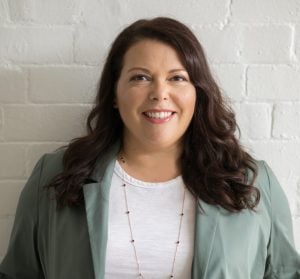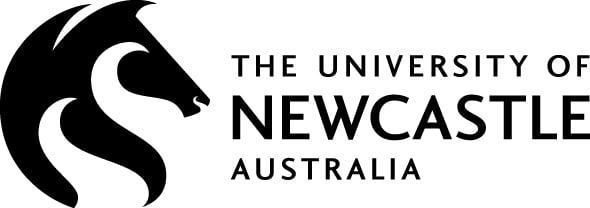Ignoring self doubt and applying for Fellowship of the Australian Institute of Architects was an important step in gaining recognition and visibility in the industry, says Melonie Bayl-Smith.

A month or so ago I was anointed a Fellow of the Australian Institute of Architects, allowing me to add the ‘F’ to RAIA (no rude jokes, thanks).
But ‘anoint’ misses the mark, because I certainly wasn’t hand-selected for this post-nominal upgrade. Nobody called me up and said, ‘Hey Mel, we’re going to elevate you to Fellow, how’d ya like that?!’
Rather, I self-nominated by completing the two-page application, gave my CV a quick spit-polish, and emailed the documents across the Harbour Bridge to the NSW Chapter office. While it didn’t take a lot of effort to assemble the application, it did ask me to ignore my self-doubts, and just Get.It.Done.
However, my elevation to Fellow hasn’t always resulted in the response I had (perhaps naively) expected. It has prompted some quite provocative conversations with others working in architecture. Congratulatory words were often swiftly followed with ‘why did you bother?’ (it’s not a worthy accomplishment), ‘it won’t make a difference, the Institute is still a boys’ club’ (your accomplishment will be ineffective), or ‘you’re an overachiever, so of course they would make you a Fellow’ (ouch).
That last comment is not particularly surprising. Like Rebel Wilson, I discovered the Tall Poppy syndrome early – other kids at primary school learned that they could quickly diminish my academic and music achievements with a snarky and persistent critique of my big-boned physique.1 And thinking back over my school years, I’ve realised that the smart, high-achieving girls were far, far more likely to attract bullying and criticism than the smart, high-achieving boys.
In case you were wondering, this unscientific review of my personal observations appears to have some substance. In a recent academic study, Maureen O’Neill and Angie Calder found that high performance adolescent female athletes are very likely to be bullied for their successes by their peers whilst similarly performing male athletes are likely to never be bullied for their sporting achievements.2
So, if a sport-mad country like Australia has an appetite for taking down female achievers who participate in its all-time favourite pastime, then really, what hope have we got?
Given this underlying cultural hostility, why did I apply to be a Fellow?
There were several reasons. Firstly, elevation to Fellow is open to member practitioners who contribute in diverse ways – not just within traditional practice. It enables a broad range of architecturally related activities – volunteering, mentoring, teaching, research, writing – to be acknowledged under the banner of a clear and knowable title. The title isn’t reserved for overachievers either (!) – the focus should and must be on meaningful contributions, no matter how specific or broad the activities. Unlike one-off awards for projects, the title of Fellow bestows a lasting recognition of one’s achievements and contributions, and it reinforces that what one brings to the conversation is worth listening to – and listening to more than once.
Yeah, I know being called a Fellow is a bit dated, a bit Masonic – to be honest, part of me secretly hoped that my Fellow certificate would be accompanied by a Druid’s cloak (matt black, of course).
But to be honest, we all know that our profession has many more pressing issues to deal with than finding a replacement for the old Fellow title – let’s start with the low hanging fruit of a national registration system, for example. Ultimately, we need people and resources to focus on the biggest challenges facing architecture – for a start, keeping women in architecture is critical to the health of the profession and it needs all the help we can give it.
Secondly, if there’s an opportunity to lay claim to some rightfully earned recognition that is visible and broadly understood by the wider community, then I think this recognition is worth the time taken to fill out an application form. Why not be recognised for my time spent volunteering on Institute committees, serving as a registration examiner, and being a sessional design tutor? Why not signal to my clients, staff, consultants, builders, colleagues and the general public that I have made some worthy contributions to my profession over the past twenty years?
The ongoing challenge is the age-old problem that women continue to undersell and undervalue their achievements. As a result, the opportunity for recognition and respect within and outside the profession is lost, delayed or under-realised.
The flip side of this, and the way I see it, is that if I’m willing to lead and encourage others through mentoring, teaching or volunteering, then surely, I should also lead by being willing to be visibly recognised for these actions – even if doing so comes at a price.
Two of my colleagues and friends, Professor Kirsten Orr and Nikki South, individually convinced me to stop undervaluing myself and to complete my application ASAP. With this legacy in mind, the very least I can do is pass that confidence baton on.
Melonie Bayl-Smith is the Director of Bijl Architecture. Alongside her recent ‘anointment’ as Fellow, Melonie is a newly appointed member of the National Committee for Gender Equity, an Adjunct Professor at UTS School of Architecture, an elected member of the NSW Architects Registration Board (2017–19), and the State Convenor of Pathways for the registration of architects in NSW.
The Australian Institute of Architects welcomes applications for elevation to Fellowships. The Institute website emphasises: “Achieving the status of Fellow displays to the profession, clients and others your high standing within the profession and your advanced level of skill and contribution.” See the Institute website for more information on how to nominate a colleague or nominate yourself for Fellowship and read Vanessa Bird’s article encouraging women to self nominate.
- Van Badham, “Rebel Wilson has landed a blow on the relentlessly aggressive media”, 19 June 2017, The Guardian[↩]
- Maureen O’Neill & Angie Calder, “Cutting down the tall poppies: female athletes bulled in Aussie schools”, 21 July 2015, The Conversation.[↩]




















